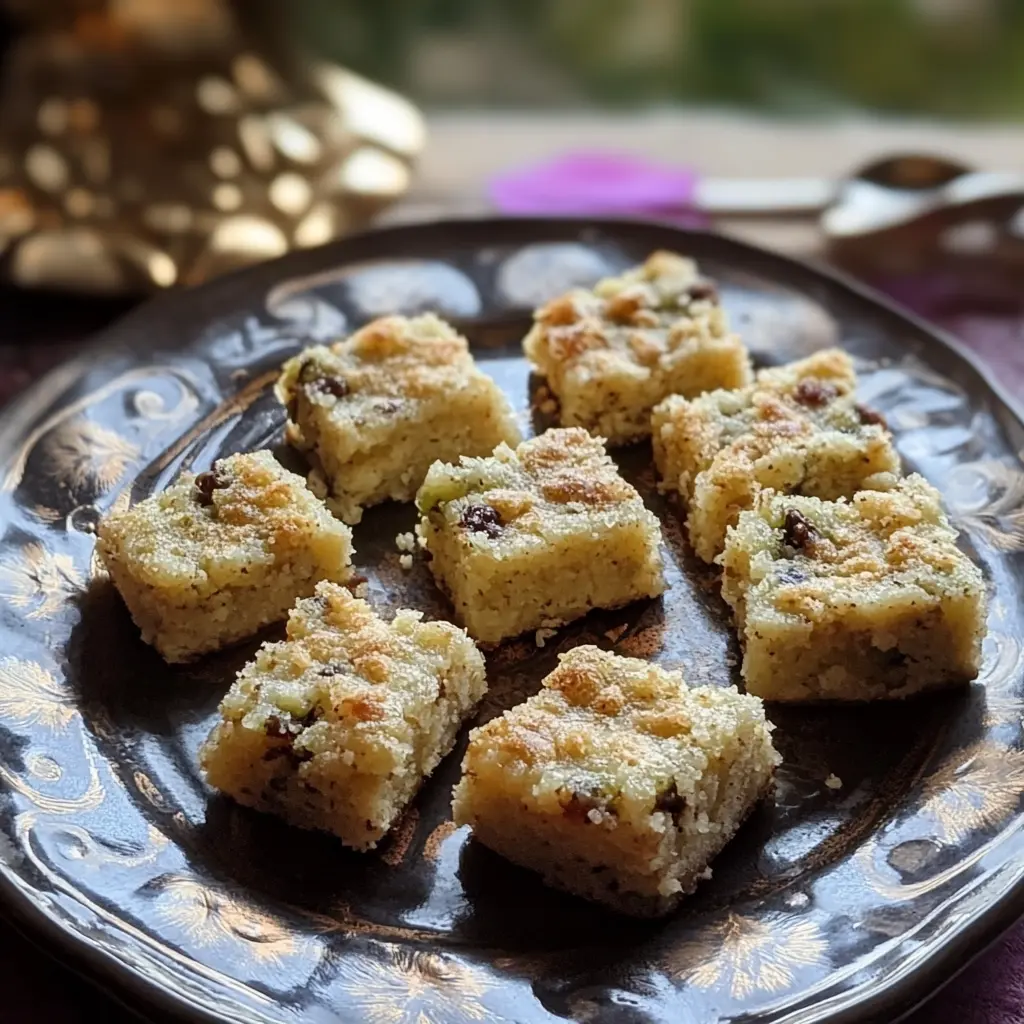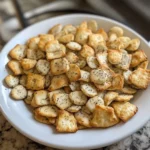Description of this recipe: Kalakand is a classic Indian sweet, a delightful milk fudge that melts in your mouth. This recipe offers a simplified yet authentic take on this traditional delicacy, perfect for those looking to create a truly special treat at home.
Why you will love this recipe: This Kalakand recipe is a revelation! It delivers the authentic taste and texture of this beloved sweet without requiring hours of laborious stirring. The use of condensed milk streamlines the process, while the inclusion of freshly made paneer provides the perfect foundation for a rich and creamy fudge. The aromatic cardamom and delicate rosewater elevate the flavors, creating a symphony of sweet and fragrant notes that will tantalize your taste buds. Whether you’re celebrating a special occasion or simply craving a delightful indulgence, this Kalakand recipe is sure to become a favorite.
Introduction
Kalakand, a cherished Indian sweet, is a testament to the magic that can be created from simple ingredients. This creamy, milky fudge has been a staple at festivals, celebrations, and joyous occasions for generations. While traditional methods can be time-consuming, requiring constant stirring and careful monitoring, this recipe offers a streamlined approach that makes creating this delectable treat at home surprisingly accessible.
The key to a successful Kalakand lies in the quality of the ingredients and the delicate balance of flavors. Freshly made paneer provides the essential milky base, while condensed milk adds sweetness and a rich, creamy texture. The aromatic blend of cardamom and rosewater infuses the fudge with a delicate fragrance that elevates the entire experience. With a few simple steps and a little patience, you can create a truly authentic and unforgettable Kalakand that will impress your friends and family.
This recipe is designed to be approachable for home cooks of all skill levels. The instructions are clear and concise, and the process is simplified without compromising on the authentic taste and texture of traditional Kalakand. Get ready to embark on a culinary journey that will transport you to the heart of India with every delectable bite!
Ingredients:
- 6 cardamom pods, seeds removed
- 1 tsp caster sugar
- 250g homemade paneer, roughly crumbled (see related recipes, below)
- 397g tin condensed milk
- Few drops of rosewater
- 3 tbsp chopped pistachios
Preparation:
Step 1: Release the Aroma of Cardamom: Begin by unlocking the aromatic essence of cardamom. Using a pestle and mortar, gently pound the cardamom seeds to a fine powder along with the caster sugar. The sugar helps to grind the seeds evenly and prevents them from scattering. This fragrant mixture will infuse your Kalakand with its signature warm and inviting flavor. If you don’t have a pestle and mortar, you can use a spice grinder or carefully crush the seeds with the flat side of a knife.
Step 2: Combine and Cook the Base: In a wok or karahi (a heavy-bottomed Indian cooking pot), combine the crumbled paneer, condensed milk, and the fragrant cardamom-sugar mixture. Place the wok over medium heat, stirring constantly to prevent the mixture from sticking to the bottom of the pan and burning. As the mixture heats up, the paneer will begin to soften and the condensed milk will melt, creating a smooth and creamy base.
Step 3: Thicken to Perfection: Once the mixture comes to a boil, reduce the heat to low and continue to cook, stirring continuously. This is the crucial step that transforms the mixture into the signature grainy texture of Kalakand. As the mixture cooks, the moisture will evaporate, and the solids will begin to coagulate, creating small, soft granules. Aim for a soft, dropping consistency, where the mixture slowly falls off the spoon, leaving a trail behind. This process will take approximately 5-7 minutes, depending on the heat and the moisture content of the paneer. It’s important to be patient and stir constantly to prevent burning and ensure even cooking.
Step 4: Infuse with Rosewater: Once the mixture has reached the desired consistency, turn off the heat and gently stir in a few drops of rosewater. The rosewater adds a delicate floral aroma that complements the milky sweetness of the Kalakand. Be careful not to add too much rosewater, as it can overpower the other flavors. Start with a few drops and adjust to your preference. Allow the mixture to cool and thicken slightly in the pan for about 10 minutes. This will help the flavors meld together and create a more cohesive texture.
Step 5: Set, Garnish, and Chill: Line a baking tray with baking parchment to prevent the Kalakand from sticking. Spread the cooled Kalakand mixture evenly onto the prepared baking tray, creating a rectangle approximately 2cm thick. This thickness will allow the Kalakand to set properly and make it easy to cut into squares later. Press the chopped pistachios evenly onto the surface of the Kalakand, creating a beautiful and festive garnish. Allow the Kalakand to cool completely before chilling it in the refrigerator for at least 2 hours, or preferably overnight. This will allow the Kalakand to firm up and develop its signature texture.
Step 6: Cut and Serve: Once the Kalakand is firm, remove it from the refrigerator and carefully cut it into 3cm squares. Serve the Kalakand at room temperature for the best flavor and texture. The slightly warm temperature will enhance the aroma and allow the creamy fudge to melt in your mouth.
COOKING Rating:
- Ease of Preparation: Intermediate
- Flavor Profile: Sweet, Milky, Aromatic
- Overall Difficulty: 3/5
Serving Suggestions:
- Serve as a dessert after an Indian meal.
- Offer as a sweet treat during festivals and celebrations like Diwali or Holi.
- Pair with a cup of hot chai or coffee.
- Garnish with edible silver leaf (varak) for an extra touch of elegance.
- Serve alongside other Indian sweets like gulab jamun or barfi.
Tips:
- Use fresh, high-quality paneer: The quality of the paneer will significantly impact the taste and texture of your Kalakand. Homemade paneer is ideal, but if using store-bought, choose a brand that is firm and has a good milky flavor.
- Stir constantly: This is the most important step to prevent burning and ensure even cooking. Use a wooden spoon or spatula to scrape the bottom of the pan while stirring.
- Don’t overcook: Overcooking will result in a dry and crumbly Kalakand. Aim for a soft, dropping consistency.
- Adjust the sweetness: If you prefer a less sweet Kalakand, reduce the amount of condensed milk slightly.
- Experiment with flavors: Feel free to experiment with other flavors like saffron, cardamom, or almond extract.
- Storage: Store leftover Kalakand in an airtight container in the refrigerator for up to four days.
Prep Time:
- 15 minutes
Cook Time:
- 20 minutes
Total Time:
- 35 minutes (plus chilling time)
Nutritional Information: (Estimated per serving – will vary depending on exact ingredients)
- Calories: 250-300
- Protein: 8-10g
- Sodium: 50-70mg
Conclusion
Congratulations! You’ve successfully created a batch of delicious homemade Kalakand. This recipe is a testament to the fact that you can create a truly special dessert with simple ingredients and a little bit of patience. Enjoy sharing this delightful Indian sweet with your loved ones, and savor the rich, creamy flavors that will transport you to the heart of India. Don’t be afraid to experiment with different flavors and variations to create your own unique Kalakand masterpiece! With practice, you’ll be able to whip up this delectable treat with ease and impress everyone with your culinary skills.
Questions and Answers about Kalakand:
Q1: Can I use store-bought paneer instead of making it at home?
A: Absolutely! While homemade paneer offers the freshest flavor and best texture, store-bought paneer can definitely be used. Just be sure to choose a high-quality brand that is firm and has a good milky flavor. Before using, gently crumble the paneer with your hands to break it up into smaller pieces, which will help it blend more easily with the other ingredients. You might also consider pressing the paneer to remove excess moisture if it seems particularly wet. This will help prevent the Kalakand from becoming too soft.
Q2: What can I do if my Kalakand is too soft and doesn’t set properly?
A: If your Kalakand is too soft, it likely means there’s too much moisture in the mixture. Don’t worry, there are a few things you can try! First, you can gently return the mixture to the wok or karahi and cook it over low heat for a few more minutes, stirring constantly, to evaporate some of the excess moisture. Be careful not to overcook it, as this can make the Kalakand dry and crumbly. Another option is to add a tablespoon or two of milk powder to the mixture, which will help absorb some of the excess moisture and provide a more stable structure. Finally, ensure you chill the Kalakand for a sufficient amount of time, ideally overnight. This will allow it to fully set and firm up.
Q3: Can I add other flavors besides cardamom and rosewater?
A: Absolutely! One of the great things about Kalakand is its versatility. You can definitely experiment with other flavors to create your own unique variations. Saffron is a popular addition, lending a beautiful golden color and delicate floral aroma. A pinch of saffron threads soaked in a tablespoon of warm milk can be added to the mixture along with the rosewater. Almond extract is another delicious option, adding a nutty sweetness. You could also try adding a pinch of nutmeg or a few drops of kewra water (pandan extract) for a more exotic flavor profile. Don’t be afraid to get creative and explore different combinations to find your perfect flavor!
Q4: How do I prevent the Kalakand from sticking to the pan while cooking?
A: Preventing the Kalakand from sticking to the pan is crucial for a smooth and even cooking process. The key is to use a heavy-bottomed wok or karahi, which will distribute the heat evenly and reduce the risk of burning. Constant stirring is also essential. Use a wooden spoon or spatula to scrape the bottom and sides of the pan frequently, ensuring that the mixture doesn’t stick and burn. If you’re still having trouble, you can try adding a tablespoon of ghee (clarified butter) to the pan before adding the ingredients. The ghee will create a barrier between the mixture and the pan, preventing it from sticking.
Q5: How long does Kalakand last, and how should I store it?
A: Kalakand will typically last for up to four days when stored properly in the refrigerator. To store it, cut the Kalakand into squares and place them in an airtight container. This will prevent it from drying out and absorbing odors from the refrigerator. It’s important to keep the Kalakand refrigerated at all times, as it is a milk-based sweet and can spoil quickly at room temperature. Before serving, allow the Kalakand to come to room temperature for about 15-20 minutes to enhance its flavor and texture.




